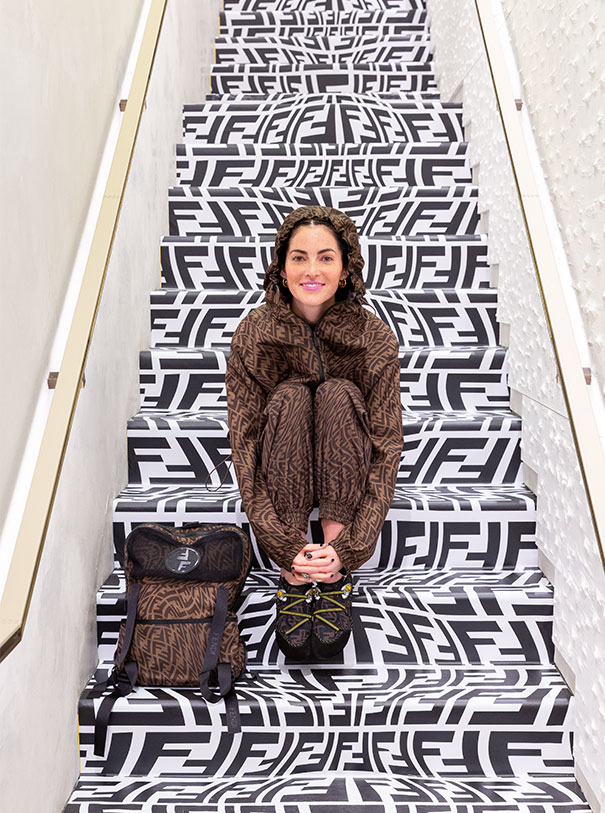
Sarah Coleman fand ihre künstlerische Identität vor einem Massagesalon in Downtown Manhattan. Draußen vor dem Salon habe sie einen Mann rauchend auf einem Klappstuhl sitzen sehen. Klein, unkompliziert, gut gepflegt, irgendwie hatte er direkt ihre Aufmerksamkeit – der Stuhl, nicht der Mann. Coleman verhandelte mit dem Salonbesitzer; wenige Tage später hatte er ihr einen Klappstuhl organisiert. Für das, was Coleman mit dem Stuhl vorhatte, würden die einen sie nicht ernst nehmen und andere sie feiern: „Einige Leute sind wütend auf mich. Ich bekomme Nachrichten wie: Wie konntest du diese Tasche zerschneiden, das ist verrückt. Dann wieder bekomme ich Nachrichten von Leuten, die davon inspiriert sind“, sagt Coleman in einem Interview. Denn wer sich auf einen von Colemans Klappstühlen setzt, wird auf Tausenden von Dollar sitzen. Coleman ist in Manhattan geboren und aufgewachsen, ihre Handwerkskunst und ihre Kreativität wurden ihr im Grunde in die Wiege gelegt, nur nicht von ihren Eltern, sondern von ihrer Babysitterin. Sie war es, die ihr das Nähen beibrachte, ihr half, alte Hemden ihres Vaters zu zerschneiden und zu etwas Neuem zusammenzusetzen und damit irgendwie daran beteiligt war, Sarah Colemans künstlerische Ausrichtung zu finden. Denn genau dafür hatte Coleman damals die Stühle besorgt: Etwas Auseinandernehmen und zu etwas Neuem zusammensetzen. Sie wollte alte Louis-Vuitton-Taschen und Koffer zerschneiden und die Stühle mit dem Leder beziehen. Es dauerte nicht lange und es kamen Sonderbestellungen – den Leuten gefiel der „zerstörte“ Luxus auf banalen Alltagsgegenständen. Was immer Coleman übrig hatte, bezog sie: Stöpsel, Toilettensitze, Feuerzeuge, Flaschen und Steckdosenumrandungen. In Colemans Arbeiten reichen sich Mode und Kunst die Hand. Nach dem College arbeitete sie für den Architekten Peter Marino, wo sie in mehreren Designteams und in der Stoffabteilung assistierte. Zu diesem Zeitpunkt eröffnete Chanel viele Läden und holte sie ins Team, um einige Stores zu entwerfen. Nun wurde Coleman vom Matriarchat der Mode persönlich gebeten, ein Ladenlokal in Miami zu gestalten: einen Fendi-Store. Außerdem entwarf sie eine Capsule Collection mit dem Label, in der sie das ikonische Fendi Logo manipulierte, indem sie es durch die Bearbeitungs-App Facetune laufen ließ. Die einzige Anweisung, die sie für die Zusammenarbeit erhalten haben soll: „Tu etwas, was sonst niemand tut.“ Das kann sie am besten.
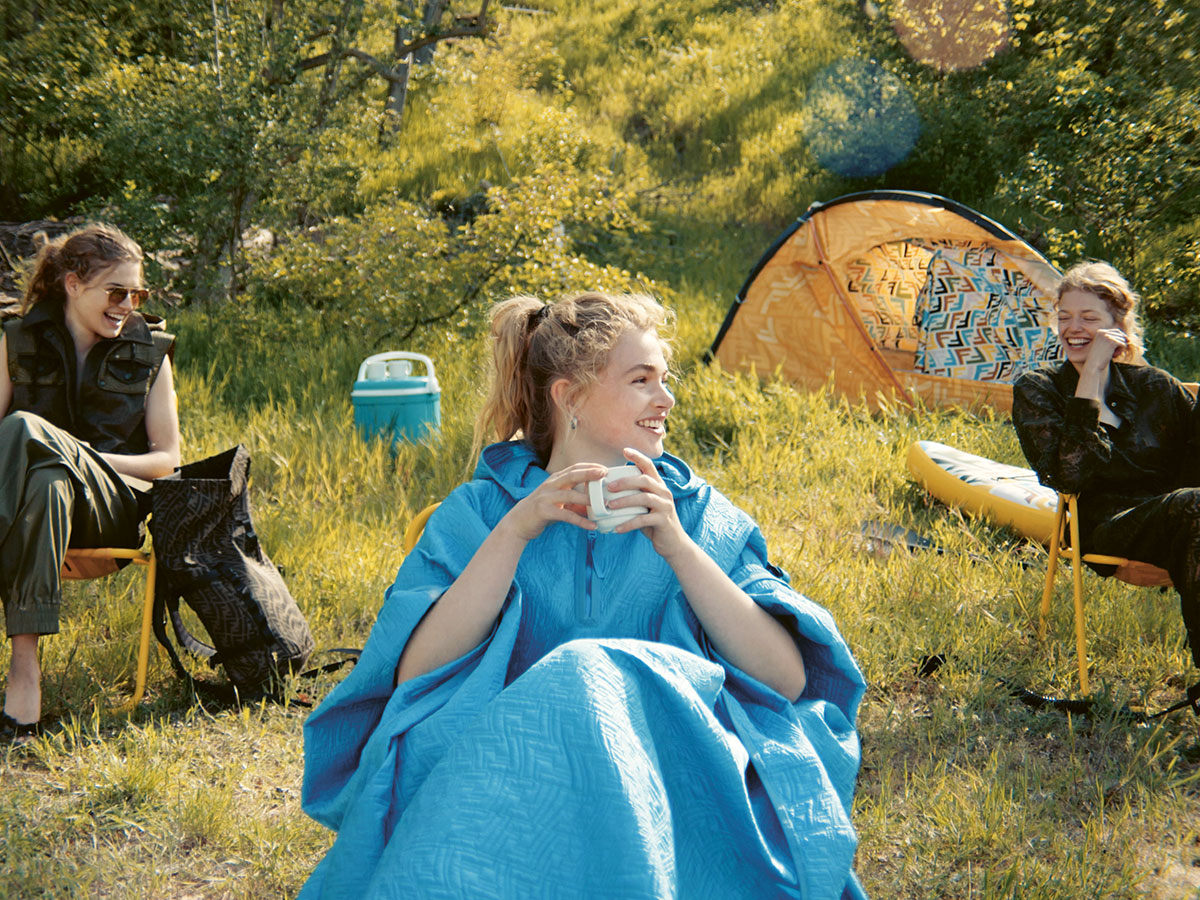
All looks, accessories, tent, chairs and SUP board FENDI FF VERTIGO SUMMER 2021 CAPSULE COLLECTION
Carmen Maiwald: Your art is to take apart old things and put them together into something new, is there a piece of clothing or an item from the past that you would never want to “destroy” or change and that you want to keep as a memory exactly as it is?
Sarah Coleman: I have a charm bracelet my mom made for me. She added charms every time we traveled together or when she saw one that reminded her of me. She gave it to me when I graduated high school but had been making it from the time I was young. Knowing she worked so hard on it and took time to put it together for me makes it so special. This I will never part with or change around. I like to photograph, scan and paint images of it but I won’t mess with that bracelet.
CM: Is it true that you learned to sew from your nanny? What influence did she have on you?
SC: Yes. She was a huge inspiration to me. She showed me how to work with my hands and to create clothes for myself and my stuffed animals. It instilled a level of confidence in me that I have carried with me through my life. Working with my hands and creating has always been a place of comfort and happiness for me. I work hard to keep it that way.
CM: Why Fendi for a collaboration?
SC: They asked me but had I been given the chance I would have picked Fendi 100 times over. It wasn’t exactly presented to me in a way like here, pick which brand you want to work with and you can have it. Silvia took a real chance and believed in me. I am still in disbelief about it but it happened so I do believe it now. Life can be funny that way. This was a very very special project for me. I am very proud of the work we did together.
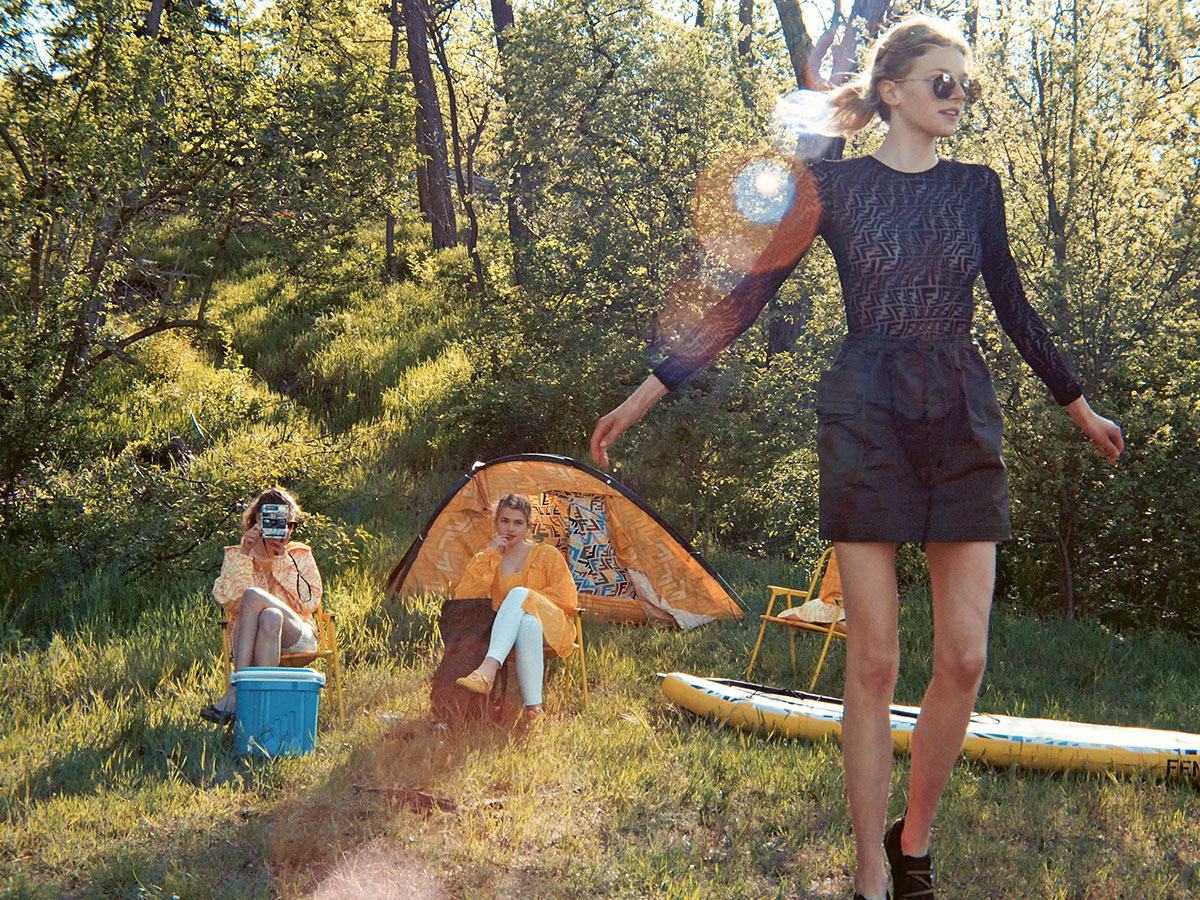
All looks, accessories, tent, chairs and SUP board FENDI FF VERTIGO SUMMER 2021 CAPSULE COLLECTION
CM: The collection you co-designed for Fendi has many references to the 70s psychedelic look and also to the 90s. If you could choose, which era would you like to live in?
SC: Aesthetically if I could choose one I would choose the 70s. The music, the clothes, the furniture, well pretty much everything that I see from the 1970s just screams at me like ‘YOU NEEDED TO BE HERE!!!!!’ Maybe one day we will be able to travel back in time. I would love to experience the 1970s firsthand but for now I will just bring it into my life whenever I can.
CM: You also interpreted the collection in a very humorous, almost ironic way. The fashion industry often comes across as a bit strict, sometimes stiff, with all the rules and precise ideas about beauty and bodies. Why does fashion need humor?
SC: Thank you! I think humor lightens everything. I also don’t know how intentional it is because it really is just a byproduct of who I am. I love to mix things up in a funny way. There is so much heaviness in the world we live in, and I feel like we all need a bit more humor. While humorous, I am quite strict in getting my work done. With each series of work or project, the process always looks very different, but I don’t cut corners or go halfway. If I’m not passionate about a project I usually don’t do it. Well, at least I don’t think that I can do it. It has to feel authentic for me to put my all in. Probably why I didn’t do so well on math tests in high school. As human beings we are so many different things at once. We can be serious and funny and sad and happy all at the same time. I like to show that in my work. The quality is very strict but the content is a little funny.
CM: Many of the pieces are oriented towards the aesthetics of outerwear. Do you like being outdoors yourself?
SC: Yes! This was a very important aspect that I wanted to focus on. I live in NYC and think it’s so ironic how New Yorkers (including myself) dress. When it’s raining or snowing we look like we are ready to climb a mountain or face the arctic tundra. I love being outdoors. It refreshes me. Being with my animals or in nature is where and when I am happiest.
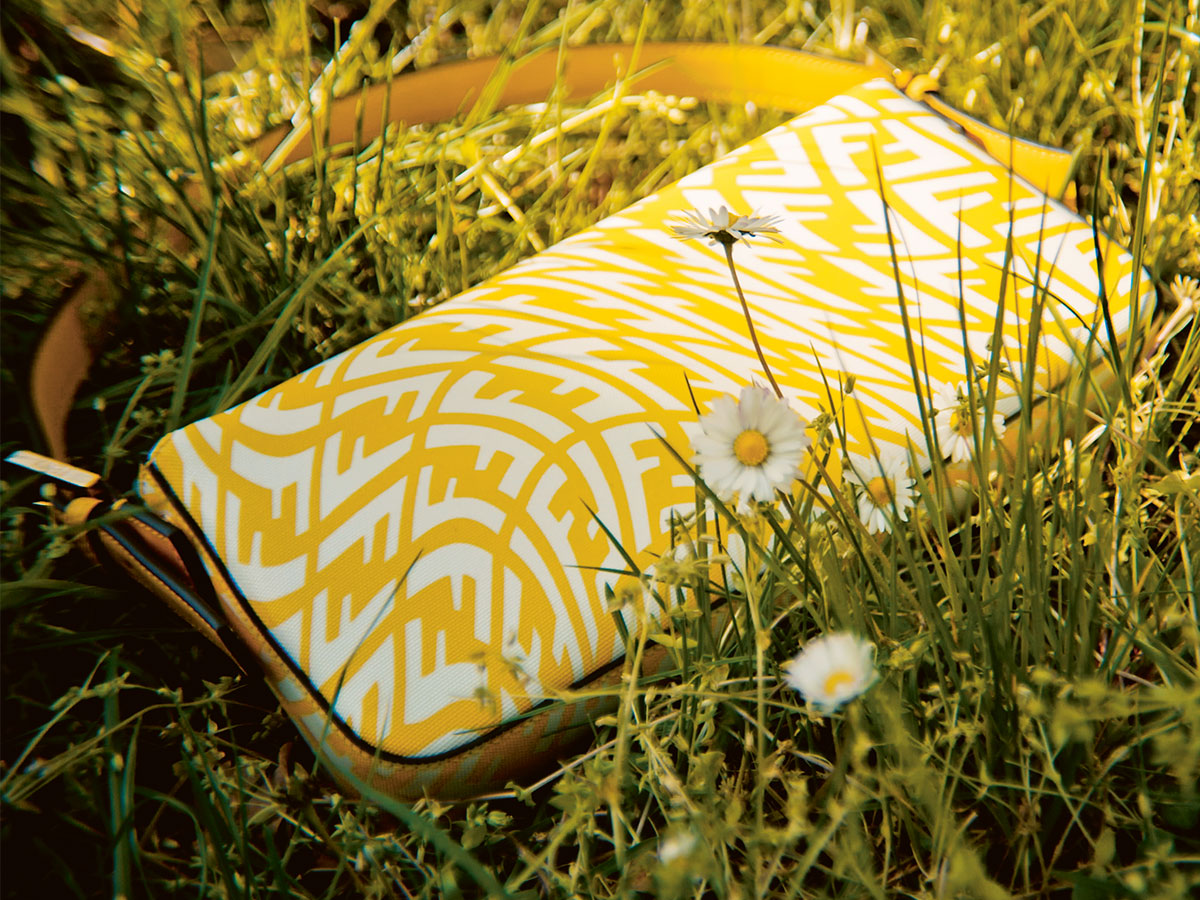
Bag FENDI FF VERTIGO SUMMER 2021 CAPSULE COLLECTION
CM: Fendi as a company has always been owned by women, has that shown in your collaborations with the house?
SC: Absolutely! The vertigo pattern alone feels extremely feminine to me. I like how fluid it is and how it so easily worn by anyone. It just feels very natural. The sentimental aspect of Fendi as a brand felt very maternal to me as well. I have and always will be very drawn in by this nostalgia. It’s a huge reason I love it so much and it felt so comfortable working with them.
CM: In your artwork you often play with the logos of the labels, what meaning do logos have for you in fashion?
SC: A good logo print acts like a neutral to me. They symbolize timelessness. The collection is also meant to convey a joyful and uplifting mood.
CM: Do you think fashion can help people to get back on their feet and find hope after the pandemic?
SC: I hope so! When we were working on it everything in the world was very scary and unknown. Death and sadness were so amplified. I feel very lucky to have been working on this during the pandemic. It allowed me a concrete place to bring joy and hope during a really horrific time. Fashion cannot heal the world but I hope for some people it can bring a little joy or fun back into their life.
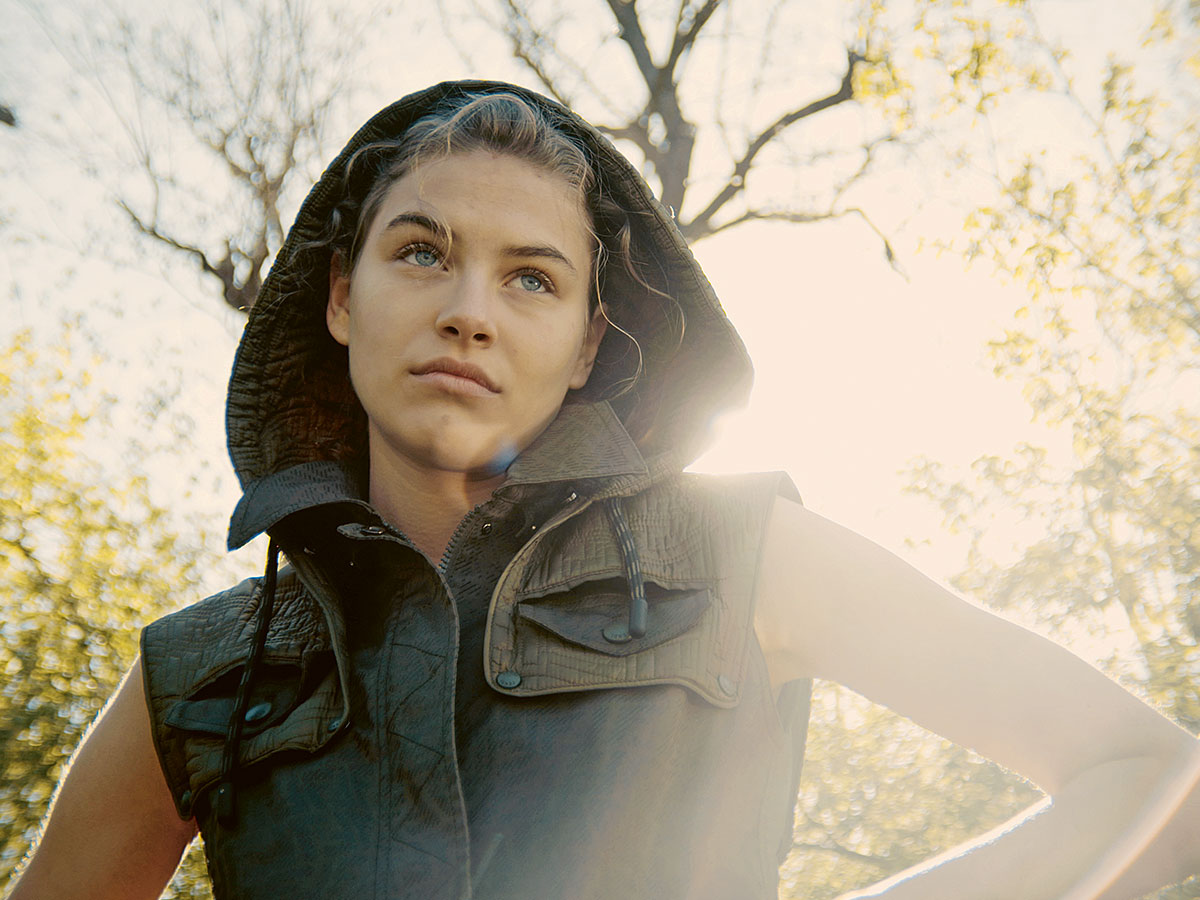
Hooded dress FENDI FF VERTIGO SUMMER 2021 CAPSULE COLLECTION
Photos: Konrad Waldmann
Styling: Markus Ebner
Models: Eliza Kallmann / Munich Models
Johanna Schapfeld / Iconic
Lola Kallmann / Modelwerk
Produzent und Konzeption: Marcus Kurz / Nowadays

